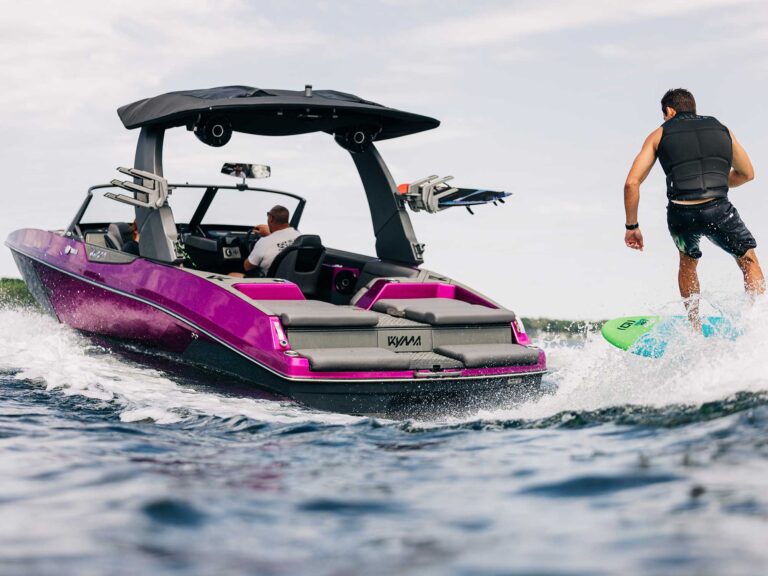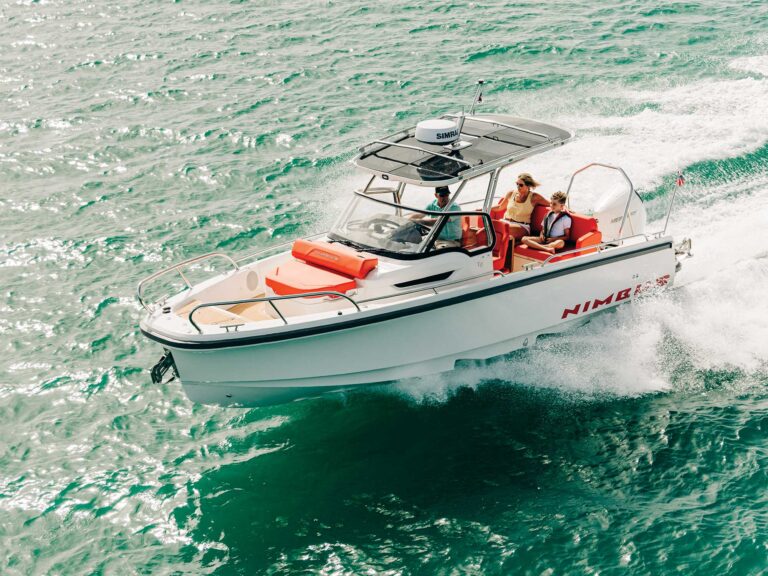Go to any boat show and you’ll hear it a hundred times: “Our boat is 100 percent wood-free, so you’ll never have to worry about rot.” Is this claim true? Absolutely. Is it the whole truth? Not by a long shot. There’s an industry-wide accepted assumption that wood is no good-and that’s just not accurate.
We all remember the days when owning a boat meant countless hours of labor replacing rotten wood. Every spring you’d identify and fix new rot, and a month later you’d find a new spot…or two or three. Some boat salespeople may manipulate these fears and use the wood-free claim to insinuate that their boats require less maintenance and last longer than those built with wood. What they don’t tell you is that today’s wood is a heck of a lot better than that of yesteryear. XL Brand plywood sold by Greenwood Forest Products, for example, is pressure and chemical treated to resist rot. In fact, Greenwood is so sure its ply won’t decay that the company offers a transferable lifetime guarantee. That’s why boatbuilding icons such as Grady-White and Pursuit use Greenwood or similar plies. Remember, too, that wood is most commonly used as a core material, so it doesn’t stand on its own but, rather, is encapsulated in, and protected by, fiberglass.
Since today’s builders use composites that end the rot-or-no-rot debate, why bother with wood at all? Because wood is often the best material for the job. Other core materials, such as closed-cell foam, don’t offer as much strength or stiffness. Wood has better sound-deadening properties. Screws get a better bite in wood than in fiberglass, so components are held together more securely. Wood has superior memory, meaning a wood-based structure will retain its shape longer under heavy loading.
Economically, composites can cost more than three times as much as wood coring, making the final product-your boat-more expensive. Sure, some composites weigh less than wood, but lighter is not always better. For instance, in similar offshore fishboats, the one with heavier wood-based stringers tends to ride better in a chop.
So, why does the assumption that wood is bad still exist? Because there’s plenty out there that’s low quality or used improperly. Today’s wood horror stories are most often a direct result of poor workmanship or substandard materials. But if high-grade rot-resistant plywood is used correctly in a fiberglass boat, you have little to worry about. In fact, a boat built with wood may well outperform and outlive the wood-free version.
The Bolder Mold
What exactly is cold molding? The term originated from boatbuilders in Europe who, after World War II, built hulls over a male jig or mold. They used new epoxy resins that, for the first time ever, didn’t need to be baked to harden. Cold molding techniques vary widely, but here are the basics: The hull is constructed over a male frame using multiple layers of cross-planked wood, impregnated with epoxy, and sheathed in a layer or two of fiberglass. Fasteners are usually removed during the process, and the holes are filled with epoxy. Sometimes a single layer of fiberglass is placed between the layers of wood, sometimes only epoxy.
Cold molding requires more time and labor than fiberglass molding techniques. As a result, it’s more expensive. So why bother? Cold-molded boats are often lighter, perform better, and are stronger than production-built fiberglass boats in the same class. To illustrate, a 1′-by-1′ section of a cold-molded hull plating weighing 3.75 pounds (three layers of 5/16″ mahogany and three layers of fiberglass) can withstand 51.3 psi before breaking. A common polyester resin/fiberglass section of the same dimensions would weigh 11 pounds and withstand just 35.2 psi.









